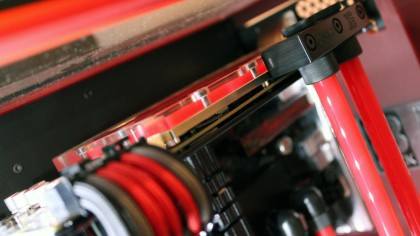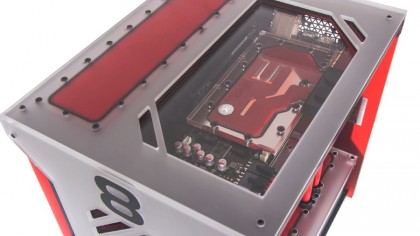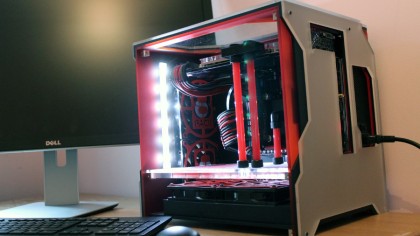Why you can trust TechRadar
The Asteroid looks incredible, and 8Pack has paired the looks with top-tier components.
Graphical grunt comes from Nvidia's GeForce GTX 980 Ti. It's one of the firm's best cards, with 8 billion transistors, 2,816 stream processors and 6GB of GDDR5 memory alongside the latest Maxwell architecture.
There's a Core i7-6700K processor with its four Hyper-Threaded cores and unlocked multiplier, and 8GB of 3,866MHz DDR4 memory.

Spec Sheet
Here is the configuration of the Overclockers 8Pack Asteroid provided to techradar for review:
- CPU: 4.7GHz Intel Core i7-6700K processor (Quad-core, 8MB cache)
- Graphics: Nvidia GeForce GTX 980 Ti (6GB GDDR5 RAM)
- RAM: 8GB DDR4 (3,866MHz)
- Storage: 500GB Samsung 850 EVO SSD; 1TB Samsung 850 EVO SSD
- Connectivity: Gigabit Ethernet; Dual-band 802.11ac WiFi
- Operating system: Windows 10 64-bit
- Power supply: SuperFlower 1000W
- Ports: Front: Rear 4 x USB 3, 1 x USB 3.1 Type-A, 1 x USB 3.1 Type-C, Optical S/PDIF, Gigabit Ethernet, 3 x audio
- Size: 10.5in x 14in x 11.6in (W x D x H; 267 x 357 x 295mm)
- Warranty: 3yr (2yr C&R, 1yr labour)
Those core parts are impressive enough on their own, but that's not why people buy 8Pack systems – they choose these monster machines to benefit from the world-class tweaking abilities of the man himself. That means no two Asteroid machines will run at the same speed, because 8Pack tests and bins chips to find the fastest silicon before overclocking each part to its best possible levels.
The GTX 980 Ti's stock speed of 1,000MHz has been upped to 1,227MHz with a boost peak of 1,303MHz, and the memory's original 1,753MHz pace now sits at a mighty 1,878MHz. The processor, meanwhile, was originally clocked to 4GHz, but now rattles along at 4.7GHz.

There's no sign of a hard disk here: Windows 10 is installed on a 500GB Samsung 850 EVO drive, and there's a 1TB 850 EVO for games. I would have preferred to see an M.2 PCI-based boot drive, but Overclockers say there's simply no room for one in this rig.
The final big part, the motherboard, the Maximus VIII Impact, is a barnstormer. Asus has crammed dozens of game-friendly features into its mini-ITX blueprint: It's got Gigabit Ethernet that prioritises game traffic and a discrete SupremeFX sound card with 10 DAC channels and multi-stream audio, and connectivity extends to dual-band 802.11ac wireless.
It's got so many capacitors that they sit on their own daughterboard, and the backplate has power, reset and BIOS-clearing buttons that are usually only found on high-end ATX boards.
The backplate doesn't stop there, either; it's got four USB 3.0 ports, USB 3.1 Type-A and Type-C connectors, three audio jacks and an optical S/PDIF output.

It's a muscular specification, but Overclockers can still kit the Asteroid out with more power. The firm offers the machine with an Nvidia GeForce GTX Titan X, 16GB or 32GB of memory and more capacious storage, but that'll cost around $700 (about £500, AU$934) more.
There's little wrong with this machine's specification – the only complaint I could make is the lack of upgrade room, but that's common across all mini-ITX machines, and people aren't buying a system like this to make their own upgrades.
Mike has worked as a technology journalist for more than a decade and has written for most of the UK’s big technology titles alongside numerous global outlets. He loves PCs, laptops and any new hardware, and covers everything from the latest business trends to high-end gaming gear.
